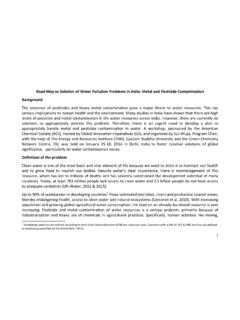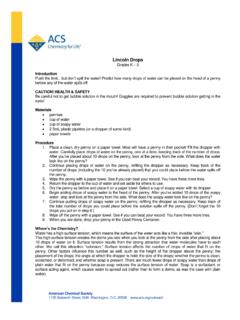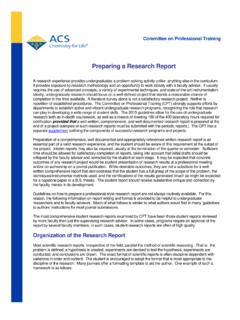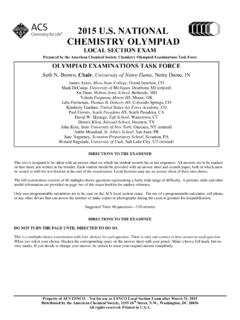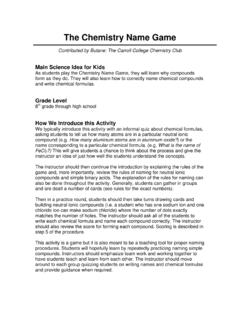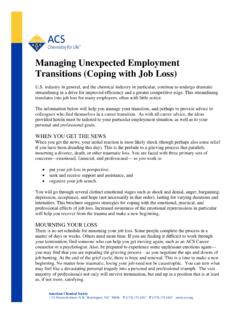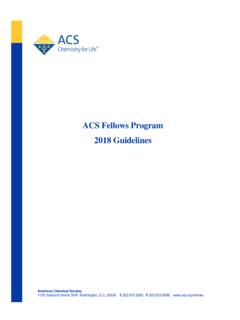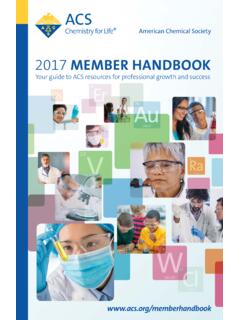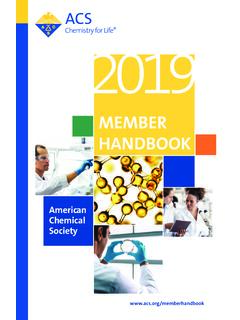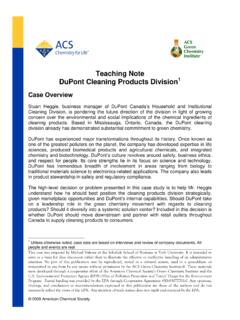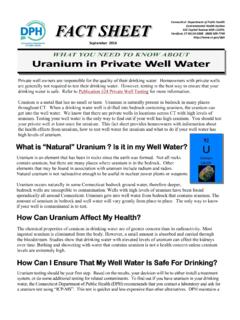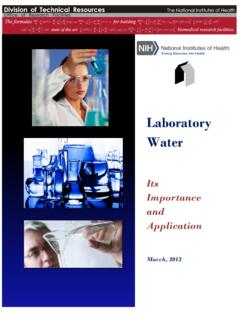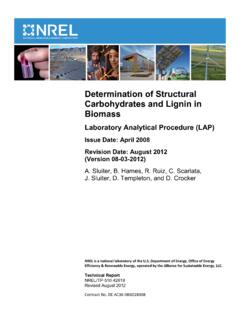Transcription of Laboratory Safety - American Chemical Society
1 Committee on Professional Training Laboratory Safety Laboratory Safety involves the development of skills and responsibility and must be an integral part of every chemistry curriculum. This means that Safety awareness must be integrated into each Laboratory course including research with increasingly broader scope at more advanced levels. The creation of a culture of Laboratory Safety requires a broad commitment from all levels of the educational institution. At the department level, faculty need to assume responsibility for continuing review of Safety issues with students in teaching and research laboratories, especially the persons responsible for undergraduate instruction, often graduate students or instructors.
2 Faculty must lead by example in a coordinated departmental Safety effort. At the administrative level, this will involve implementation of a Chemical hygiene plan that is in agreement with any campus Chemical hygiene/ Safety efforts and must address the safe handling, storage, and disposal of chemicals. Eye wash and showers must be in operating condition, and fume hoods with proper sashes are essential. Anyone working or visiting in the lab must be wearing goggles, and consumption of food or drinks must not be permitted.
3 A clean, uncluttered Laboratory is more likely to encourage careful work. Development of Safety skills may be divided into four emphasis Recognize Hazards Assess Risks Minimize Risks Prepare for Emergencies The ACS Committee on Chemical Safety has recently published three useful resources that provide guidelines for Chemical Safety in academic and help in the identification and evaluation of hazards in research Recognize Hazards A hazard is a potential source of danger or harm and can result from working with chemicals, equipment.
4 And instrumentation. Introduction to this topic can start with an understanding of the terms describing Chemical hazards, such as toxic , flammable , or corrosive , and how to obtain information from Chemical labels, Safety Data Sheets (SDS), and other reference sources. Chemical hazards encountered in early undergraduate laboratories should be explained in more detail for example, acids, bases, flammables, and toxic compounds. At more advanced levels, more details of Chemical and physical hazards should be explained so that students are able to identify hazards themselves in experiments for example, types of toxic compounds, compressed gases, cryogenics, pressurized systems, peroxides, reactives, unstable compounds, pyrophorics, explosives, and water -reactives.
5 Other topics might include toxicology, nanomaterials, biohazards, and radiological hazards, which become relevant when the chemistry curriculum becomes broader in Assess Risks Once a hazard(s) is recognized, Laboratory Safety necessarily requires an assessment or evaluation of risk from potential exposure to the hazard. Identifying potential routes of exposure is followed by judging the relative risk posed by the hazards of the experiment. The hazardous physical, Chemical , and toxic properties of solvents, reactants, catalysts, products, and wastes should be considered as well as circumstances of the experiment for example, how much is being used, is the right equipment available, can the hazard be controlled or minimized?
6 - 2 - Are the reactions exothermic or water - or air-sensitive? Are there risks associated, for example, with the use of lasers or equipment utilizing high voltages (electrophoresis)? Minimize Risks Based on a risk assessment, experiments should be designed to minimize potential risks. These steps may involve carrying out experiments in a fume hood with a protective shield and wearing protective gloves and goggles. The handling and storage of wastes is a critical component. It is often useful to consider case histories of incidents that have resulted in injury or damage.
7 What could have been done to prevent or minimize such incidents? Discussion can be implemented by giving students a picture of a risky or hazardous environment and then asking them, What is wrong with this picture? Prepare for Emergencies Since it is essential to react promptly and deliberately to emergencies, students should learn what to do in various emergencies and be prepared to act accordingly for example, fires, injuries, and spills. Safety devices such as showers, eye washes, fire extinguishers, and spill kits, must be clearly labeled and their use and location known to all those working in a Laboratory .
8 Emergency phone numbers, alarms, and escape routes should be clear to everyone. The Culture of Laboratory Safety Faculty and staff must be leaders in Safety : teaching Safety to students, continuously promoting Safety , demonstrating the importance of Safety through their actions, and accepting responsibility for Safety . At some institutions the graduate students teach the undergraduate labs, in which case the graduate students TAs must be champions of Safety ethics. The Safety Ethic is, above all, a value, stated as: I value Safety , work safely, prevent any risk-behavior, promote Safety , and accept responsibility for It emphasizes personal responsibility of each person involved.
9 In order for this culture to thrive, everyone must be promoting it. It is, of course, necessary to be familiar with Occupational Safety and Health Administration (OSHA), Environmental Protection Agency (EPA), Department of Transportation (DOT), and Department of Energy (DOE) regulations, but responsibility goes beyond simply complying with federal, state and local regulations it is about caring for the Safety of fellow students, faculty, and staff. There are several Chemical and Laboratory Safety resources that can be very useful in building a strong culture of Curricular Approaches Laboratory Safety education and training is an ongoing process and therefore must be integrated into every Laboratory course.
10 In research laboratories, the responsibility for necessary instruction will lie with the research director. Because of time and resource constraints, presentation and discussion may be limited in lab lectures prior to the start of a Laboratory or pre-lab assignments. Three possible approaches are suggested: 1. A seminar course devoted entirely to Laboratory Safety ; 2. Laboratory Safety as part of a seminar devoted to chemistry as a profession; and, 3. Online materials where students would be required to do reading and then pass exams, the grades being recorded.
